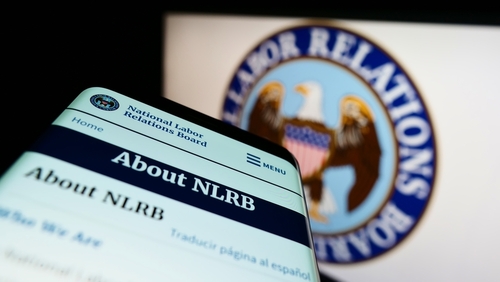Cooley Law back in compliance, ABA accreditation committee says

Logo from Twitter.
Western Michigan University Thomas M. Cooley Law School has come into compliance with an admissions standard that requires accredited schools to only admit candidates who appear capable of finishing law school and gaining admission to a state bar, according to public notice recently posted by the ABA’s Section of Legal Education and Admissions to the Bar.
The section’s council in November 2017 affirmed an accreditation committee finding that Cooley was not in compliance with Standard 501(b), which focuses on admissions, and Interpretation 501-1, which discusses factors to consider in admissions.
The school filed a temporary restraining order motion on Nov. 14 to prevent the council from making the letter about the notice public. The motion was rejected in the U.S. District Court for the Eastern District of Michigan. A lawsuit Cooley filed against the ABA, alleging that posting the letter violated the Higher Education Act and common-law due process, is pending. On April 23, U.S. District Court Judge Arthur J. Tarnow set a May 1 status conference for the lawsuit, according to court notices published on PacerPro.
The law school was not available for comment at press time.
“The ABA law school accreditation process includes opportunities for schools to address matters of noncompliance determined by the accreditation committee and the council,” Barry Currier, the ABA’s managing director of accreditation and legal education, said via email. “When that occurs, and the committee or the council conclude that the steps taken by a school have addressed the concerns that led to the finding of noncompliance, then the appropriate action is to find that the school has returned to good standing on those issues.” Currier would not comment on the pending litigation.
David Frakt, a Florida lawyer and frequent critic of the accreditation process, raised questions about what Cooley Law has done to reach compliance with Standard 501, saying it’s possible that as part of a settlement agreement, details about Cooley’s “concrete steps” were not included in the recent accreditation committee finding.
“The public—and perhaps the Department of Education—is likely to be very skeptical about this decision without evidence of what the concrete steps taken are,” says Frakt. He’s notes that other ABA-accredited law schools have recently come into compliance with Standard 501 by not accepting applicants with LSAT scores below 142, and setting median LSAT scores of at least 146.
Some law schools told to come into compliance set new cut scores immediately, while others are given time to reach the target, Frakt says, adding that he’d like to know what Cooley Law agreed to do with its cut scores.
“This decision is highly opaque, which is a reversal of a recent trend [with the section] toward greater transparency,” he adds.
Between 2014 and 2017, the law school’s median LSAT score has been below 146, according to the law school’s 509 reports, which can be seen here, here, here and here. Its median GPA during that same time period has ranged from 2.85 to 2.94.
Current cut scores will be available in the fall, Frakt says, when the ABA releases annual 509 reports.
Write a letter to the editor, share a story tip or update, or report an error.


